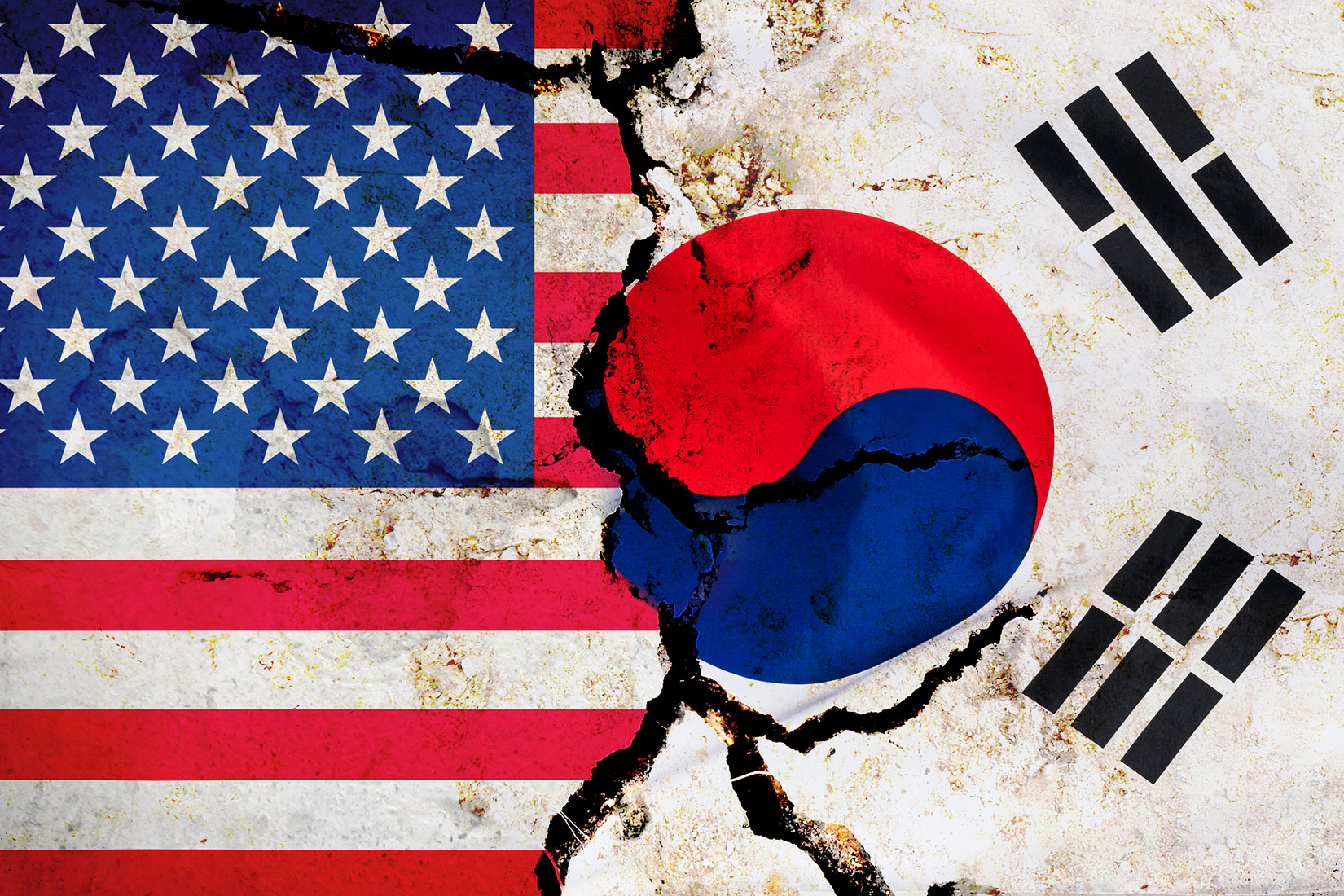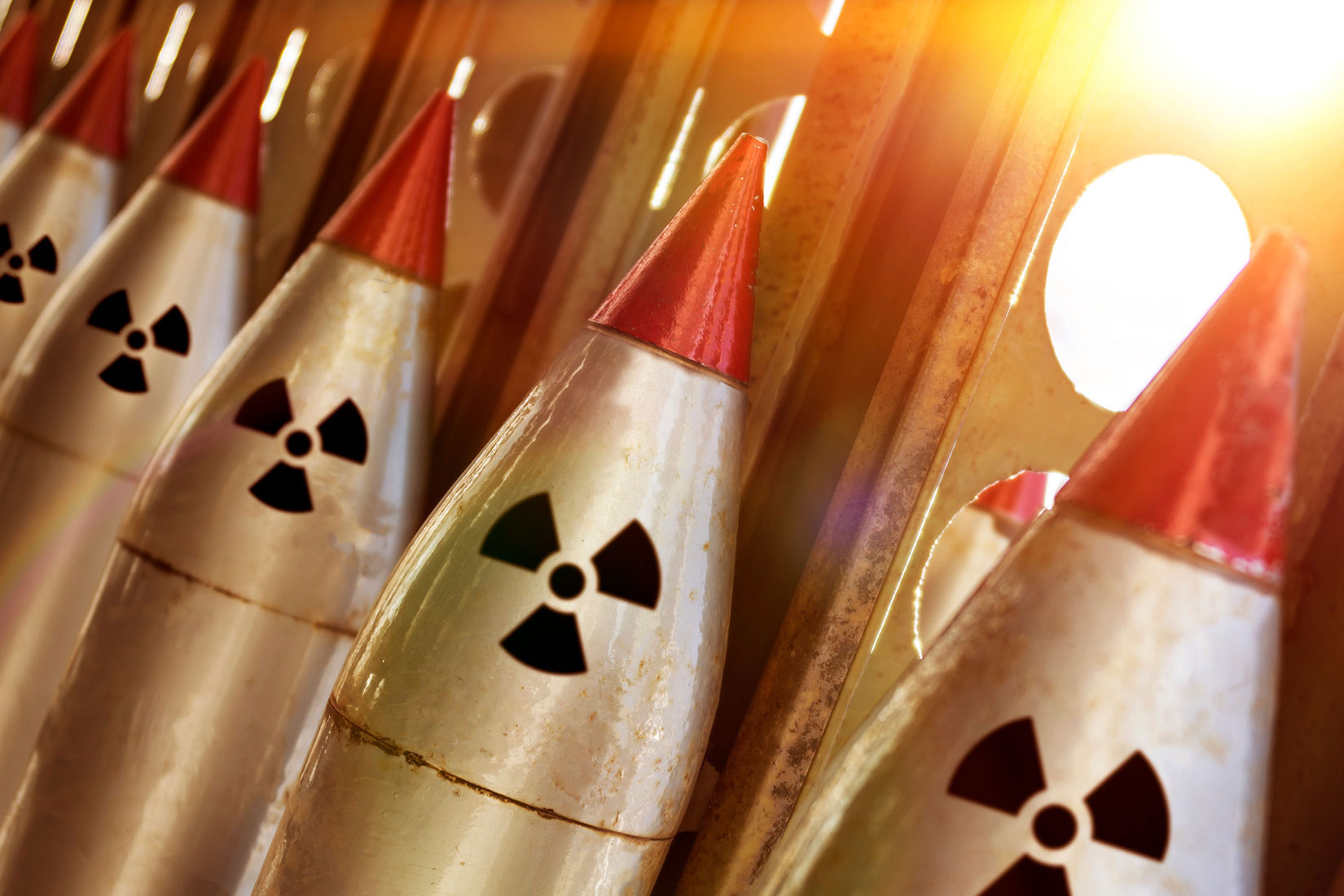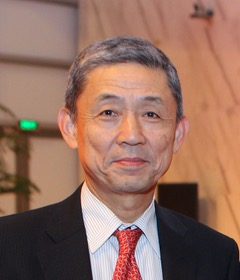Calling for cutbacks in America’s global security burden, US President Donald Trump has, since the 2016 election campaign, been pledging to bring US troops home from overseas assignments and demanding that allies pay more for their own defense. He has stepped up such calls since taking office, and he has withdrawn some forward-deployed forces from Syria.
These developments have made us in Japan nervous, not so much for our own sake but more because South Korea’s relations with the United States have become strained. The Trump administration pressed Seoul to pay sharply more for the presence of US forces in the country and openly criticized President Moon Jae-in for his August announcement not to renew the General Security of Military Information Agreement (GSOMIA) with Japan, which outlines the forms by which the two countries exchange confidential information on security threats.
Washington continued to pressure Seoul to reverse its decision until just a few hours before the pact expired, when South Korea relented and said it would conditionally cancel its termination.
Beijing retaliated with boycotts and other harsh economic measures when Seoul agreed to host America’s Terminal High Altitude Area Defense (THAAD) antimissile defense system on South Korean soil. The Moon administration has since been forced to appease the Chinese leadership, raising the specter of a greatly reduced US presence in Japan’s neighbor.
This may have been behind Seoul’s reluctance to renew the GSOMIA agreement, which—despite being a bilateral pact with Tokyo—essentially lies at the heart of its alliance with Washington.
I have been directly engaged in advancing Japan’s security cooperation with South Korea since the 1990s. In the wake of provocations by Pyongyang, Japan and the United States negotiated the Revised Japan-US Defense Cooperation Guidelines in 1996–97 to enhance Japan’s role in a Korean Peninsula contingency. By clarifying each country’s responsibilities, this was a task that allowed us to think through a coherent response to a regional crisis. It also reminded me of the extremely significant role that the US forces in Japan, Japan’s Self-Defense Forces, and the Japanese government would play in such an emergency.

Providing Rear-Area Support
Japan can play an extremely important role in a large-scale Korean contingency as a logistic support base, as the roughly 20,000 to 30,000-strong US forces stationed in South Korea can be reinforced by some 500,000 follow-on forces. A substantial part of such rapid deployment will be conducted from or through Japan, which will most likely provide pivotal rear-area support in a contingency. Military bases, ports, and airfields here will serve as key hubs, and the entire country will play a logistical role, with wounded soldiers being treated at Japanese hospitals, and damaged equipment being shipped here for repairs.
Since the mid-1990s, the United States has regarded its alliances with Japan and South Korea as inextricably linked, like the two sides of a coin. Japan, for its part, has benefitted greatly from the US-Korea alliance, which, for seven decades, has prevented incursions by the North beyond the thirty-eighth parallel, enabling Japan to live in peace. And South Korea has been a beneficiary of the Japan-US alliance as well.
Direct ties between Japan and South Korea, though, represent a missing link in this triad.
For this reason, members of the US foreign and security policy community initiated a track-two dialogue to encourage their Japanese and South Korean counterparts to work closer together. A trilateral meeting was held in August 1994 that led to not only a shared understanding of the importance of this network but also the creation of an official channel of communication between the Japanese and South Korean defense authorities.
One of the focal points when Japan and the US worked to revise the Japan-US Defense Cooperation Guidelines in 1996 and 1997 was a response to a Korean contingency, and this naturally required coordinating our actions with South Korea. Similarly, US and South Korean forces would rely on Japan for rear-area support, such as logistics, during a contingency.
With this understanding, a number of track-one meetings were held on a trilateral basis among the responsible defense officials and high-ranking military officers from the three countries. As Japanese officers explained the actions envisaged under the Revised Japan-US Defense Cooperation Guidelines, the Korean participants would begin taking notes, pausing at times to look at their US counterparts, who would nod to confirm our statements. The Korean officers would then begin a briefing on Operations Plan 5027, developed with the United States to defend against a possible North Korean invasion. This time, the Japanese note takers would look up at the US participants, who would nod as if to say they have no qualms about sharing highly classified information with us.
Without the presence of US officers, though, such sharing of sensitive information could never have materialized.
It was not until many years later, in 2012, though, that the GSOMIA intelligence-sharing pact was ready to be signed. This was called off at the last minute due to South Korean concerns of a domestic backlash. It took four more years and a big push from Washington for the pact to be finally inked in 2016.
China’s Belt-and-Road Initiative and US Indo-Pacific Strategy
Even if GSOMIA had expired in November 2019, technical and tactical difficulties for US military operations, such as missile defense, would have been surmountable. The political and strategic fallout, though, would have been harder to overcome, as the greatest beneficiary of a rupture in Japan–South Korea relations would be North Korea, followed by China.
If the globe is likened to a game board, the Korean Peninsula is at the Far Eastern edge. And capturing the corner is of great strategic importance in the game of geopolitical Othello.
There is considerable geographical overlap between America’s Indo-Pacific strategy and China’s Belt and Road Initiative. This is no accident, for the regions covered—encompassing Northeast and Southeast Asia, South and Central Asia, and the east coast of Africa—are regarded to be the drivers of future global growth.
The “Indo-Pacific” was earlier called by other names, such as the “Arc of Freedom and Prosperity” and the “Arc of Instability”—two contrasting labels that reveal its dual features as a region of both hope and anxiety.
One source of anxiety, on the eastern end of the “arc,” is the Korean Peninsula, which is in a state of frozen conflict. Washington has been critical of Seoul’s announcement to terminate GSOMIA because this would weaken the tripartite alliance network of the United States, South Korea, and Japan, which has been pivotal in maintaining peace since the signing of the Korean Armistice Agreement in 1953.
Why was China so vociferously opposed to the deployment of the THAAD missile defense system in South Korea? My hunch is that it has less to do with the system’s capabilities than with its symbolic meaning—that a former tributary state would dare to prioritize the wishes of the United States over the objections of the Chinese leadership.
For better or worse, Beijing is a staunch believer in nonintervention, so it takes a hands-off approach to what it perceives to be the internal affairs of other states—including the defense policy of Japan. When Tokyo deployed surface-to-ship and surface-to-air missiles in 2010 to bolster the defense of the Southwestern Islands, I expected Beijing to protest or at least to resort to pressure tactics, since such missiles would deny access to those islands in the event of a contingency. But the reaction was muted, allaying my fears that Japanese public opinion, too, would succumb had Beijing clamored loudly against deployment.
The decision to beef up the defense of the southwestern islands was made when the Democratic Party of Japan was in power. China’s main complaint with this decision was not the deployment itself but that it was premised on portraying China as a threat, which, in a sense, is an extension of Beijing’s insistence that other states not interfere in its domestic affairs.
This makes its censure of Seoul for deploying the THAAD system even more surprising. Perhaps South Korea is the only country that China treats so high-handedly—with the possible exception of North Korea.

South Korea’s “Silent Majority”
The population of North Korea is 25 million, and that of its southern neighbor is 54 million—about half of whom are not only pro-American but also pro-Japanese. They may largely be silent about their sympathies—since voicing them out loud would be about as indiscreet as rallying for the construction of a new US base at Henoko in Okinawa—but I hope they actually constitute a majority.
I was involved from the mid-1990s in advancing various forms of defense cooperation with our South Korean counterparts, but these initiatives largely went unpublicized in our respective countries. This was out of deference toward South Koreans who are loath to cooperating with “imperialistic” Japan and toward Japanese who staunchly oppose any arrangements that could open the door to collective self-defense.
There is also national character to consider, with both Koreans and Japanese being swayed by emotion more than being guided by reason. This has made it harder to resolve our two countries’ differences. But those of us in the military are trained to keep our heads cool, and officers in the two countries recognize the need for close cooperation and coordination. An example of this is the establishment of a hotline in the mid-1990s linking Kasuga Air Base in Japan and Daegu Air Force Base in South Korea, through which security information has been exchanged on a daily basis. The air defense controllers of the two bases reportedly communicate with each other more than 10 times a day.
At the South Korean National Security Council meeting prior to the August 2019 GSOMIA announcement, the Ministers of Foreign Affairs and National Defense both strongly advised the administration of Moon Jae-in against scrapping the agreement, saying doing so would only hurt South Korean interests.
Needless to say, Washington wants to keep its alliances with both its East Asian partners running smoothly and hopes for improved ties between Japan and South Korean, especially now as it seeks to negotiate a nuclear deal with Pyongyang.

After all, what brought Trump and Kim Jong-un to the negotiating table is not faith in each other’s goodwill but rather the mutual fear of the other’s malevolence. Without this sense of dread, there would be no compulsion to talk. It is for this very reason that the US–South Korean alliance must remain strong, with the Japan-US alliance ready to offer rear-area support.
Japan’s relations with South Korea have become so acrimonious that a lot of hard work will be required to restore mutual trust. Moon Jae-in’s last-minute decision to postpone GSOMIA’s expiry was no doubt prudent, but it was also a politically difficult one.
We should do what we can to mitigate the negative political consequences of this decision so that the Korean people will not harbor resentment over what they interpret to be a disgraceful capitulation to US demands, when Japan made no commensurate sacrifices. We should laud their courageous decision and work assiduously to improve bilateral ties.
The postwar situation on the Korean Peninsula has not always been stable, so we must give thanks to the US and South Korean forces for buffering Japan from having to directly confront security threats. This has been a great blessing for our country, notwithstanding the growing chill in our bilateral relationship.
On the Other Side of the Acheson Line
There are concerns in Washington that Seoul is slowly drifting toward Pyongyang and Beijing. One is reminded, though, that US strategic thinking is fundamentally premised on the 1950 Acheson Line, drawn by Secretary of State Dean Acheson (against Douglas MacArthur’s assertions for broader engagement), which excluded South Korea from the US line of defense against Soviet and Chinese advances. In reality, of course, were South Korea to side with the communist regimes, America’s East Asian strategy would be dealt a serious blow, and Japan will be exposed directly to security threats. Washington might even begin rethinking its commitment to the region.
This would be a scary scenario, for without a US presence in Northeast East, Japan would have to defend itself. The costs in terms of time and money to secure Japan’s global strategic standing and establish a viable system of deterrence, including with nuclear weapons, would be staggering. If Japan did decide to become a nuclear power, it might wind up being as isolated as North Korea.
Clearly, Japan should do what it can to ensure a continued US presence. We should not complacently assume that America will never leave, given Japan’s critical importance for US strategy.
But seeing Seoul’s brazen hostility toward Tokyo and bickering with Washington since autumn 2019, I grew worried about Korea being reunified on Pyongyang’s terms. This might be highly unlikely, but South Korea could, once again, find itself on the other side of the Acheson Line. When that happens, China—not North Korea—might become the primary security threat. The Korean Peninsula is a battleground of competing interests, not just between South and North but also among Japan, the United States, China, and Russia. We must not forget the many benefits South Korea’s geopolitical proximity has rendered for both Japan and the United States.
Even if US forces remain in Japan, their withdrawal from South Korea would mean a far bigger burden and heightened anxiety for Japan.
Trump is preoccupied at the moment with getting reelected, and he believes that a breakthrough in talks with North Korea would significantly boost his chances. Should he win in November, though, his incentive for foreign policy successes could dissipate.
Japan must thus do its part to repeatedly remind our American allies that the southern half of the Korean Peninsula is of critical importance to their continued prosperity as well.
Translated from “GSOMIA haki enki Kankoku o kenasuna,” Σtoica, January 2020.
(2020/3/31)

